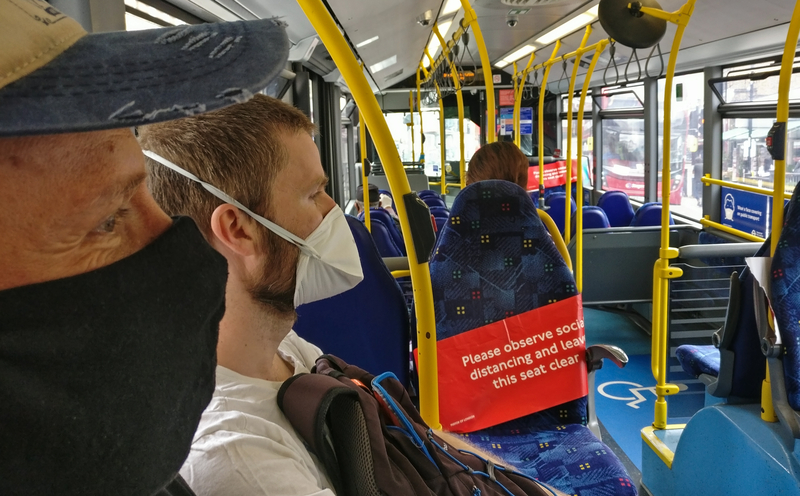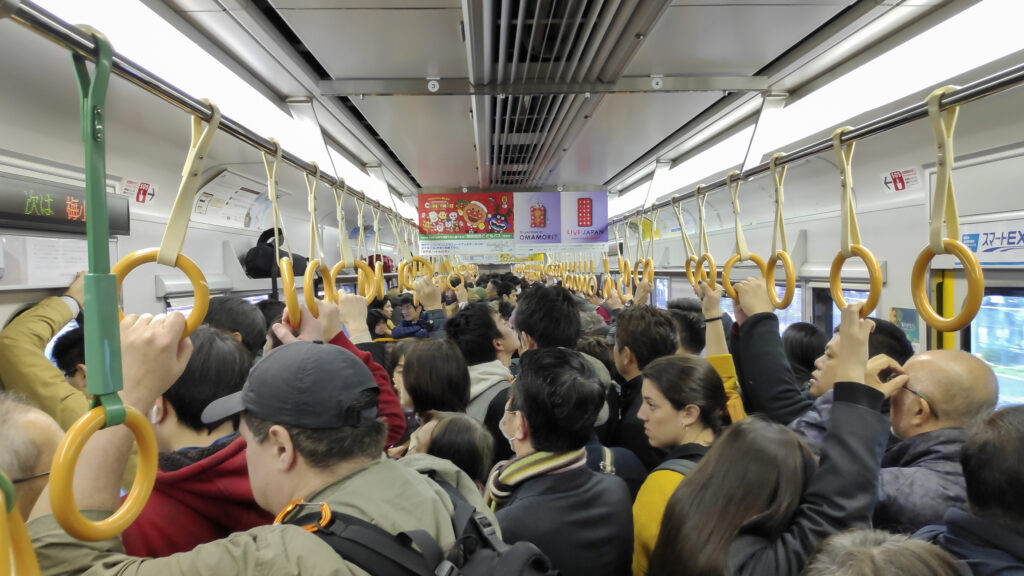Mind the gap: public transport needs a ventilation upgrade

The pandemic has seen clean air rise up the public agenda, especially when it comes to shared spaces such as schools, offices and hospitality venues. Leading health authorities, such as the UK SAGE committee and US Centers for Disease Control & Prevention, have provided guidance for bridging the ventilation gap with air purification. Yet on public transport, people’s prime means of travelling to such shared spaces, the most advanced technology for mitigating the risk of viral transmission is face masks. More a gaping hole than a gap.
During lockdown, government advice to ‘work from home if you can’ saw a dramatic reduction in public transport usage. Since restrictions have been lifted, passenger numbers remain low, as people’s fear of contracting Covid-19 in confined spaces persists. In December 2020, The Guardian reported that over half of public transport users in the UK said they would continue to avoid buses and trains after the pandemic. After people were advised to work from home to tackle the ‘tidal wave’ of Omicron cases, data has shown the government guidance has had an immediate impact on the roads and public transport (Sky News).
Public transport as a super-spreader
SAGE’s May 2020 paper – Evidence for transmission of SARS-COV-2 on ground public transport and potential effectiveness of mitigation measures – points to evidence that public transport is a super-spreader of Covid-19.
One study (Zhao et al., 2020) explored evidence for transmission of SARS-CoV-2 by examining the association between the load of domestic passengers from Wuhan and the number of Covid cases confirmed in different cities. They found a significant association between travel by train and the number of Covid-19 cases.
Another study (Qian et al., 2020) analysed 318 outbreaks in China involving more than 3 people, indicating that transport – associated with 34% of the outbreaks – was the second most important category following household transmission.
Given that the World Health Organization’s latest advice places far greater emphasis on transmission from inhaled airborne droplets, rather than from touching contaminated surfaces, it can be deduced that airborne transmission is the main problem on public transport.
Impact on health and the economy
158,000 Covid deaths have been recorded in the UK from 7.7m cases, a 2% death rate (gov.uk). The economic impact is far reaching too. GDP declined by 9.8% in 2020 (UK Parliament, 2021) and the 2021 NIESR expects it to be 4% lower in 2025 than it would have been without the pandemic, with a £727bn cumulative loss of economic output.
While workers remain anxious about the risk of contracting Covid-19 and its variants while commuting, they will opt to work from home. Apart from the obvious impact on businesses serving city-centre workforces – as well as public transport operators – the perpetuation of virtual working patterns is having an adverse impact on organisations’ ability to collaborate, innovate and evolve.
Even if Covid-19 is not factored into the equation, the economic impact of infectious disease is proven. For example, the flu costs £30bn in sick days every year (International Longevity Centre UK, Dec 2019). Despite the economic benefits of preventing the flu, flu vaccination rates continue to fall across OECD countries, highlighting the need for other prevention measures.
In this context, there is a strong argument for upgrading indoor air quality on public transport, not just to stem the spread of disease, but also to encourage workers to trust the modes of transport that relay them to their physical workplaces.
A viable technological solution
Air purification is commonly used in aeroplanes, yet not in ground transportation. Most commercial aircraft are equipped with HEPA (High Efficiency Particulate Air) filters. Typically, around 40% of a cabin’s air gets filtered, with the balance made up from natural ventilation, fresh air channelled from the outside of the plane.
Why HEPA? Because it traps a minimum of 99.97% of particles whose diameter is equal to 0.3 microns, with the filtration efficiency increasing for particle diameters both less than and greater than 0.3 microns. Covid-19 particles are typically 0.1 microns in size as aerosols and above 10 microns when enveloped in respiratory fluid, meaning that HEPA captures 99.99%. HEPA is even proven by NASA.
Adapting such a solution to ground transport vehicles is a challenge, due to the confined spaces, the need to miniaturise without compromising performance, and the ruggedisation demanded by a moving environment. However, it can be achieved, with the air purification device being a specialist sub-system that fits into a wider in-vehicle ventilation system supplied to transport OEMS.
Tesla has shown that it can be applied to private vehicles with their so-called ‘Bioweapon Defense Mode’ in-car air purification. In a controlled experiment, Tesla claims that the HEPA filtration system in a Model X passenger car brought pollution levels from an extremely dangerous 1,000 µg/m3 to levels so low as to be undetectable within a period of less than two minutes.
While HEPA is the natural choice to capture fine particulate matter with no harmful by-products, it is also highly desirable for any air purification sub-system to include UVC light to destroy pathogens. By doing so within an enclosure protects the public, while negating the possibility of disturbing and releasing live viruses during maintenance. Both HEPA and UVC are recommended in guidance from SAGE, CDC, CIBSE, ASHRAE and the Royal Academy of Engineering.

Social drivers for clean air
While air pollution threatens everyone, the poorest and most marginalised people bear the brunt (WHO, 2018). Additionally, the Covid-19 mortality rate is much higher in elderly people, poorer groups and ethnic minorities (BMJ, 2021).
Many of the most vulnerable societal groups overlap with heavy public transport usage. TfL’s ‘Transport Classification for Londoners’ customer segmentation tool shows that 7 out of 9 population segments, including low income and ethnic subgroups, are average, above average or well above average users of buses, trains or tubes.
In Greater London alone, the transportation network comprises 8,000 train carriages and 6,000 buses. Globally, Frost & Sullivan (2016) estimates that by 2022 there will be 1.6 million train carriages and 3 million city buses. Given the broad usage among most socio-demographic groups, improving air quality on public transport presents a huge opportunity for preventing the transmission of Covid-19 and other airborne diseases.
The time to act is now
Covid-19 and its variants continue to pose a serious threat to world health. The World Health Organization’s April 2021 ‘Roadmap to improve and ensure good indoor ventilation in the context of COVID-19’ provides guidance on ventilation rates for health care settings, non-residential settings and residential settings. But public transport gets no mention.
If we are to live with Covid and keep it at bay, infection prevention measures must plug the gap between the home and places of work or social gathering. The equation ‘Total Ventilation = Outside Air Ventilation + Air Purification’ has been adopted as standard by the airline industry. We must now take the same approach for ground transportation, starting with rail, tube and bus and eventually extending to all passenger cars.
